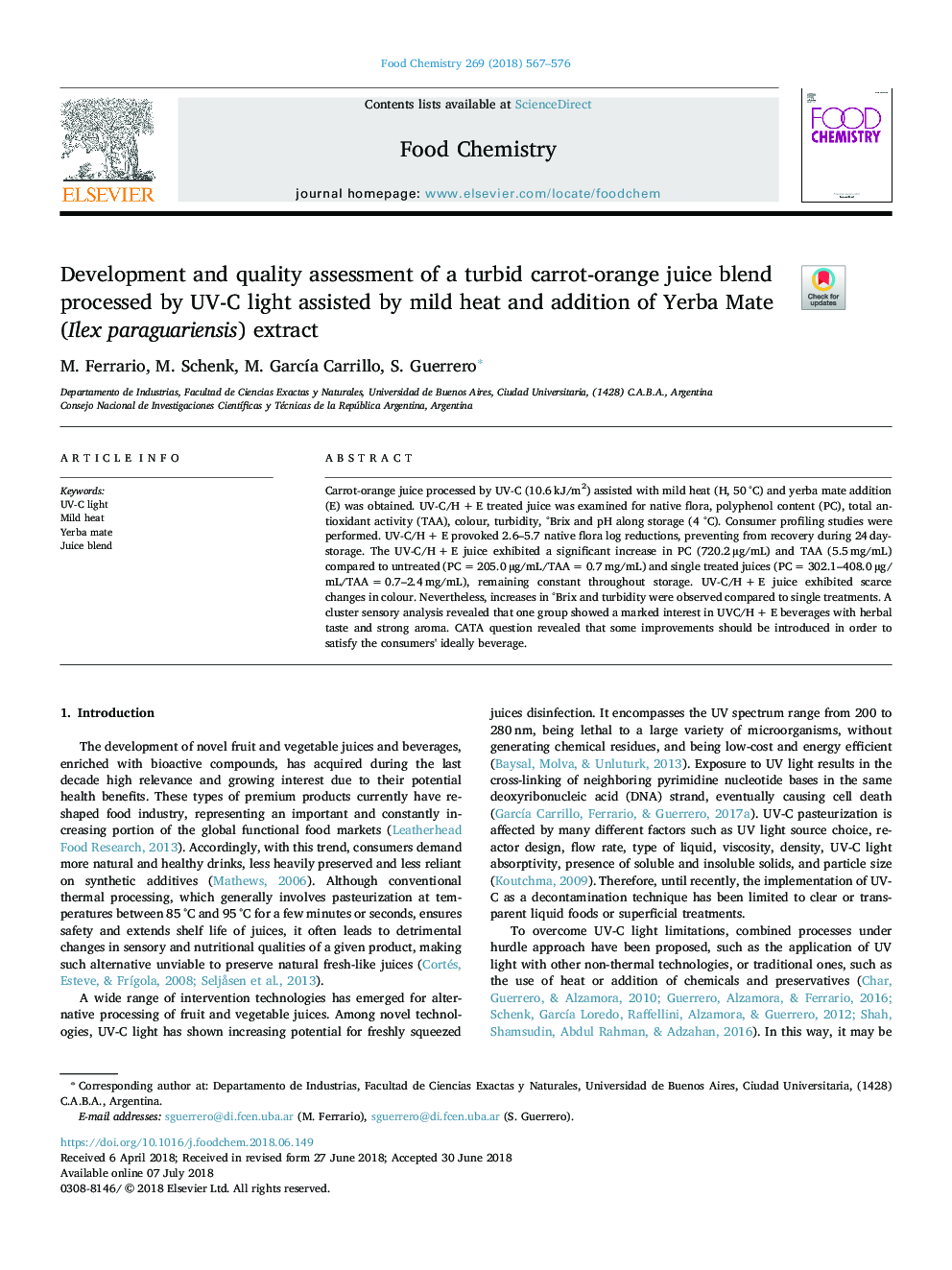| Article ID | Journal | Published Year | Pages | File Type |
|---|---|---|---|---|
| 7584341 | Food Chemistry | 2018 | 10 Pages |
Abstract
Carrot-orange juice processed by UV-C (10.6â¯kJ/m2) assisted with mild heat (H, 50â¯Â°C) and yerba mate addition (E) was obtained. UV-C/Hâ¯+â¯E treated juice was examined for native flora, polyphenol content (PC), total antioxidant activity (TAA), colour, turbidity, °Brix and pH along storage (4 °C). Consumer profiling studies were performed. UV-C/Hâ¯+â¯E provoked 2.6-5.7 native flora log reductions, preventing from recovery during 24â¯day-storage. The UV-C/Hâ¯+â¯E juice exhibited a significant increase in PC (720.2â¯Âµg/mL) and TAA (5.5â¯mg/mL) compared to untreated (PCâ¯=â¯205.0â¯Âµg/mL/TAAâ¯=â¯0.7â¯mg/mL) and single treated juices (PCâ¯=â¯302.1-408.0â¯Âµg/mL/TAAâ¯=â¯0.7-2.4â¯mg/mL), remaining constant throughout storage. UV-C/Hâ¯+â¯E juice exhibited scarce changes in colour. Nevertheless, increases in °Brix and turbidity were observed compared to single treatments. A cluster sensory analysis revealed that one group showed a marked interest in UVC/Hâ¯+â¯E beverages with herbal taste and strong aroma. CATA question revealed that some improvements should be introduced in order to satisfy the consumers' ideally beverage.
Keywords
Related Topics
Physical Sciences and Engineering
Chemistry
Analytical Chemistry
Authors
M. Ferrario, M. Schenk, M. GarcÃa Carrillo, S. Guerrero,
